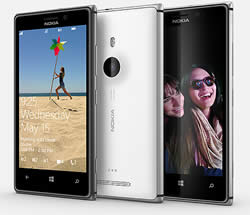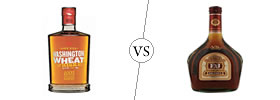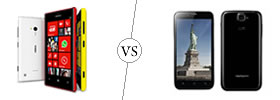Difference between Nokia Lumia 925 and HTC One
Key Difference: Nokia has recently announced its new flagship phone the Nokia Lumia 925. The phone comes with a 4.5-inch AMOLED capacitive touch screen which takes up a good amount of space on the front, with the speaker and sensors on the top. The 4.5-inch capacitive screen has the same PureMotion HD+, ClearBlack that is found in Lumia 920. HTC has launched its flagship phone HTC One with a brand new Qualcomm quad-core processor which sports a 4.7 inch Super LCD3 screen, with Full HD1080p, 468 PPI and corning gorilla glass 2.
 Nokia has recently announced its new flagship phone the Nokia Lumia 925. This phone is in lines with the other new Nokia Lumia 928, but differs from its cousin in many ways. The Nokia Lumia 925 was also known as “Catwalk” phone for a long time before it was officially announced. The company has maintained a similar design to its Lumia phones but has added a metal band. This is the first phone that will feature a mix of plastic and metal. However, the back is still made of polycarbonate plastic. The phone is made slim and light weight making it comfortable to hold. The phone’s frame is made of aluminum with only the back made of plastic. However, the back is non-removable so the battery is not easily accessible.
Nokia has recently announced its new flagship phone the Nokia Lumia 925. This phone is in lines with the other new Nokia Lumia 928, but differs from its cousin in many ways. The Nokia Lumia 925 was also known as “Catwalk” phone for a long time before it was officially announced. The company has maintained a similar design to its Lumia phones but has added a metal band. This is the first phone that will feature a mix of plastic and metal. However, the back is still made of polycarbonate plastic. The phone is made slim and light weight making it comfortable to hold. The phone’s frame is made of aluminum with only the back made of plastic. However, the back is non-removable so the battery is not easily accessible.
The device is available in black, white or grey, so don’t look for the bright colors that are expected of other Nokia phones. The phones comes with a 4.5-inch AMOLED capacitive touch screen which takes up a good amount of space on the front, with the speaker and sensors on the top and the three capacitive buttons (Home, Back and Menu) on the bottom. Similar to the other high-end Lumias, the top of the device holds audio jack, the microUSB port and the SIM slot. The left and the bottom side of the device is bare, while the right side has the volume rocker, the power button and the dedicated camera button making it a little too crowded.
The 4.5-inch capacitive screen has the same PureMotion HD+, ClearBlack that is found in Lumia 920. The ClearBlack technology plus the HD OLED screen offers sharp, clear images and also spectacular viewing in sunlight. The phones provides a good contrast and vibrant colors but the difference is not really that apparent when using day-to-day.
Under the hood, the phone is powered by Dual-core 1.5 GHz Krait Qualcomm MSM8960 Snapdragon, the same processor used in Lumia 920 and 928. The processor is fast and responsive, but lags when it comes to camera. The phone comes with Adreno 225 and 1 GB RAM, compared to the 2G found in its competitors. The phone comes with only 16 GB internal memory and does not offer users to extend it using an external card. The phone integrates the Windows Phone 8 OS, which works seamlessly. However, again similar to all other Windows Phones, the app stores lack many apps and still has yet to reach its potential.
The phone comes with an 8.7MP rear camera and a 1.3MP front camera. The camera comes with upgraded technology that uses a 1/3'' sensor size to take more high-res photos. The camera also comes with Nokia’s Smart Camera technology that allows taking 10 photos at once, which can then be altered to create the perfect photo. This is similar to the Zoe technology found on HTC One that takes mini videos along with photos. The company has also added an additional lens on the five-lens that allows taking much better photos. Nokia also boasts about its low-light imaging technology that allows users to take excellent photos in low-lighting conditions. The imaging technology is quite superior and does take excellent images with less blur. However, the camera shutter is quite slow which requires the user to hold the phone with a steady hand to eliminate motion blur.
The company also has removed the built-in wireless feature to cut down on the weight, but has added it as an option by purchasing the wireless cover. The phone comes with a non-removable Li-Ion 2000 mAh battery that allows the phone to go longer periods of time without requiring charging. The phone also comes with a few nifty features that make it stand out. The new phone is slick, thin and has decent features. It could just be phone that turns the tide in favor of Nokia Windows Phone.
 HTC One was originally launched as the brand name for a series of Android phones by the company. These included HTC One X, HTC One X+, HTC One V, etc. Now, the company launched a new phone with the name HTC One. The HTC One X was launched in May 2012. This often causes confusion as this phone is expected to be a successor to the One X. HTC One is expected to be superior compared to the One X in hardware design and software design. It also includes a unique camera implementation.
HTC One was originally launched as the brand name for a series of Android phones by the company. These included HTC One X, HTC One X+, HTC One V, etc. Now, the company launched a new phone with the name HTC One. The HTC One X was launched in May 2012. This often causes confusion as this phone is expected to be a successor to the One X. HTC One is expected to be superior compared to the One X in hardware design and software design. It also includes a unique camera implementation.
In terms of hardware and software, HTC One sports a 4.7 inch Super LCD3, with Full HD1080p, 468 PPI and corning gorilla glass 2. The HTC One comes with Android v4.1.2 Jelly Bean that is upgradable to v4.2.2. The case is an all-aluminum frame with an antenna built into its backing. It includes a 1.7 GHz quad-core Snapdragon 600 processor, Adreno 320 GPU and 2 GB DDR2. The phone is available with non-expandable, 32 or 64GB internal capacity. It offers a 4 megapixel 2688 x 1520 pixels primary camera with autofocus, LED flash and BSI sensor, along with a 2.1 MP, 1080p@30fps, HDR secondary camera.
The main feature is the new pixilation system that is opted in the primary camera of the phone, which provides each pixel size of 2.0 µm and sensor size of 1/3'. The One also includes a new camera app known as ‘Zoe’, which records a short video alongside every photo taken and allows the resulting photos and videos to be automatically combined and synchronized with music to produce a multimedia presentation known as a Zoe. The One also offers a new feature on the home screen known as the BlinkFeed. This is a newsfeed that automatically upgrades every two hours if connected with a mobile service or more frequently when connected via WiFi. The BlinkFeed takes up the main home screen and cannot be removed, resulting in the home screen as not being as customizable as in the previous phones.
The information for the detailed table about the two phones has been taken from the Nokia website, HTC website and GSMArena.com.
|
|
Nokia Lumia 925 |
HTC One |
|
Launch Date |
June 2013 |
April 2013 |
|
Company |
Nokia |
HTC Corporation |
|
Size |
129 x 70.6 x 8.5 mm |
137.4 x 68.2 x 9.3mm |
|
Display |
4.5 inches AMOLED capacitive touchscreen |
4.7 inch Super LCD3 |
|
Screen |
768 x 1280 pixels (~334 ppi pixel density), 16M colors |
1080p, 468 PPI (Full HD) |
|
Protection |
Corning Gorilla Glass 2 |
Corning Gorilla Glass 2 |
|
Weight |
139 grams |
143g |
|
2G Network |
GSM 850 / 900 / 1800 / 1900 |
HSPA/WCDMA: Europe/Asia: 850/900/1900/2100 MHz |
|
3G Network |
HSDPA 850 / 900 / 1900 / 2100 - RM-892, RM-893 HSDPA 850 / 900 / 1700 / 1900 / 2100 - RM-910 |
GSM/GPRS/EDGE: 850/900/1800/1900 MHz |
|
4G Network |
LTE 800 / 900 / 1800 / 2100 / 2600 - RM-892 LTE 700 / 1700 / 2100 - RM-893 |
Available in select countries. |
|
GUI |
Windows Phone 8 |
HTC Sense 5 |
|
CPU speed |
Dual-core 1.5 GHz Krait |
Qualcomm® Snapdragon™ 600, quad-core, 1.7GHz |
|
GPU |
Adreno 225 |
Adreno 320 |
|
OS |
Windows Phone 8 |
Android OS, v4.1.2 (Jelly Bean), upgradable to v4.2.2 (Jelly Bean) |
|
Chipset |
Qualcomm MSM8960 Snapdragon |
Qualcomm APQ8064T Snapdragon 600 |
|
RAM |
1 GB |
2 GB DDR2 |
|
SIM Size |
microSIM |
microSIM |
|
Internal Memory |
16 GB |
32/64 GB |
|
Expandable Memory |
N/A |
No |
|
Sensors |
Ambient light sensor, Accelerometer, Gyroscope, Proximity sensor, Magnetometer, Orientation sensor |
Gyro sensor, Accelerometer, Proximity sensor, Ambient light sensor. |
|
Connectivity |
SIM, microUSB, 3.5mm audio, USB, Bluetooth, Wi-Fi, NFC, Wi-Fi Channel bonding |
Compliant with Bluetooth 4.0, Bluetooth 4.0 with aptX™ enabled, Wi-Fi: IEEE 802.11 a/ac/b/g/n, DLNA, micro-USB 2.0. |
|
Data |
GPRS, EDGE, WLAN, Bluetooth, NFC and USB. |
GPRS, EDGE |
|
Speed |
HSDPA, 42.2 Mbps; HSUPA, 5.76 Mbps; LTE, Cat3, 50 Mbps UL, 100 Mbps DL |
HSPA+; LTE, Cat3, 50 Mbps UL, 100 Mbps DL |
|
WLAN |
WLAN IEEE 802.11 a/b/g/n |
Wi-Fi 802.11 a/ac/b/g/n, Wi-Fi Direct, DLNA, Wi-Fi hotspot |
|
Bluetooth |
Bluetooth v3.0 with A2DP; Object Push profile (OPP) 1.1, Hands-free profile (HFP) 1.5, Advanced Audio Distribution Profile (A2DP) 1.2, Audio/Video Remote Control Profile (AVRCP) 1.4, Phone Book Access Profile (PBAP) 1.1 |
Compliant with Bluetooth 4.0, Bluetooth 4.0 with aptX™ enabled |
|
USB |
microUSB v2.0 |
micro-USB 2.0. |
|
Primary Camera |
8.7 MP, 3264 x 2448 pixels |
4 megapixel 2688 x 1520 pixels, autofocus, LED flash BSI sensor, Pixel size 2.0 µm, Sensor size 1/3', Dedicated HTC ImageChip™ 2 F2.0 aperture and 28 mm lens |
|
Secondary Camera |
1.3 MP, 720p@30fps |
2.1 MP, 1080p@30fps, HDR |
|
Video |
1080p@30fps, video stabilization |
1080p@30fps, HDR, stereo sound rec., video stabilization |
|
Camera Features |
|
|
|
Sound Enhancement |
Dolby Headphone sound enhancement Active noise cancellation with dedicated mic |
HTC BoomSound, Dual frontal stereo speakers with built-in amplifiers, Beats Audio, HDR Microphone and Sense Voice. |
|
Audio supported formats |
ASF, MP4, AAC, AMR, MP3, M4A, WMA, 3GP, 3G2 |
Playback: .aac, .amr, .ogg, .m4a, .mid, .mp3, .wav, .wma (Windows Media Audio 9) Recording: .amr |
|
Video supported formats |
MP4, WMV, AVI, 3GP, 3G2, M4V, MOV |
Playback: .3gp, .3g2, .mp4, .wmv (Windows Media Video 9), .avi (MP4 ASP and MP3) Recording: .mp4 |
|
Battery Capacity |
Non-removable Li-Ion 2000 mAh battery (BL-4YW) |
2300 mAh |
|
Talktime |
2G: 18 hours 3G: 12 hours |
No official data is released |
|
Standby Time |
3G: 440 hours |
No official data is released |
|
Available Colors |
Black, White, Gray |
Gray, White, Black, with more colors to come. |
|
Messaging |
SMS (threaded view), MMS, Email, Push Email, IM |
SMS (threaded view), MMS, Email, Push Email |
|
Browser |
HTML5 |
HTML, Adobe Flash |
|
Radio |
FM radio |
Stereo FM radio with RDS |
|
GPS |
GPS with A-GPS support and GLONASS |
A-GPS support |
|
Java |
N/A |
Java MIDP emulator |
|
Additional Features |
|
|
Image Courtesy: nokia.com, anandtech.com









Add new comment